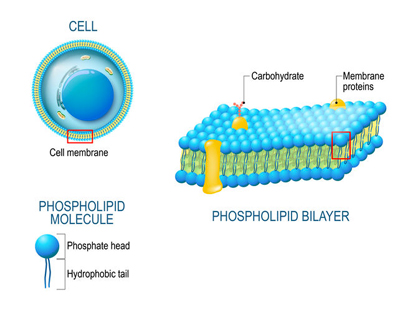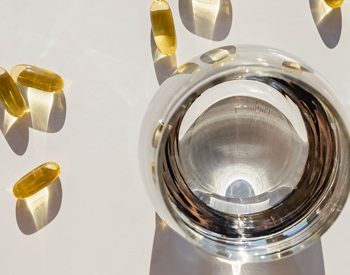
CELL MEMBRANE, OUR CHOICE

WHAT ARE FATS NEDEED FOR?
It is expected that to this question, we all answer: fats constitute our energy reserves (and we must do everything to burn them because they make us fat).
In reality this is an (inexact) answer that hides a purely anthropocentric point of view since it responds rather to the question “what fats do in the human body?”.
From an evolutionary point of view, the biochemistry of fats (lipids) teaches us that their first role is to delimit spaces by isolating them from the external aqueous medium. The chemical structure, in fact, makes them little or nothing similar to water and, for this reason, they tend to aggregate into spherical structures, delimiting an internal space separated from the outside.
This is most likely the purpose for which the first single-celled organisms began to synthesize the molecules of fats: to isolate themselves from the external environment they needed to create a lipid membrane.
CONSEQUENTLY, THE FATTY ACIDS ARE IMPORTANT FOR LIFE FIRST OF ALL AS ESSENTIAL CONSTITUENTS OF CELL MEMBRANES.
FATS, ELEMENTS OF THE CELL MEMBRANE
Without the membrane there can be no life and each membrane derive from another pre-existing one. The membrane perpetuates itself eternally. But this is not the case with regard to its composition.
 While, in fact, bacteria and plants can synthesize all de novo membrane lipids from non-lipid sources, animals, as well as humans, can only synthesize saturated and monounsaturated fatty acids. Polyunsaturated fatty acids (omega-3 and -6) instead depend on the diet, which is why they are called essential.
While, in fact, bacteria and plants can synthesize all de novo membrane lipids from non-lipid sources, animals, as well as humans, can only synthesize saturated and monounsaturated fatty acids. Polyunsaturated fatty acids (omega-3 and -6) instead depend on the diet, which is why they are called essential.
Therefore, precisely due to dependence on the usual diet, the composition of cell membranes can vary considerably from normal values over the life of the individual [*]. The percentage variations (in excess or defect) of the fatty acids of the cell membrane can therefore compromise normal cell metabolism.
THE PATH OF FATS: FROM THE DIET TO THE CELL MEMBRANE
Fats represent a large part of the nutrients we take in our diet. These molecules become part of the cell membrane.
The direct link between diet, membrane composition and cellular function is therefore evident. By analyzing the composition of the membrane, and any imbalances, it is possible to “read” how the individual’s diet affects his cellular health.
Many metabolic processes depend on the type of fat in the cell membranes. Specifically, the various families of fatty acids, by regulating
- directly or indirectly, the expression of DNA (on/off)
- inflammatory processes (activation and resolution through the biosynthesis of lipid signaling molecules)
- the chemical-physical properties of the membrane
in fact, they influence and intercede in all phases of proliferation and metabolism of all tissues.
THE ADVANTAGES OF THE CELL MEMBRANE
When necessary, the lipid rebalancing of the cell membrane exploits two principles:
– the normal cell turnover in the body: when a new cell is formed, the composition of the membrane will depend on the available fatty acids;
– the continuous remodeling of the membrane: every external signal that reaches the cell surface is “translated” and shift inside, through the release of fatty acids from the membrane which are immediately replaced.
Therefore, while a person’s DNA cannot be modified, the rebalancing of the membrane is possible and obtainable in a few months by studying, in a personalized way, the intake of fatty acids from the diet and from supplementation. Obtaining the balanced composition of the membrane represents the starting point for having an excellent cellular function and consequently acting on the metabolism of the whole organism.
[*] Ferreri C, Chatgilialoglu C (2012) Expert Rev. Mol. Diagn. 12 (7), 767-780
Ferreri C et al. (2017) Diagnostics 7, 1
The information given should in no way replace the direct relationship between health professional and patient.
- On 9 June 2021



